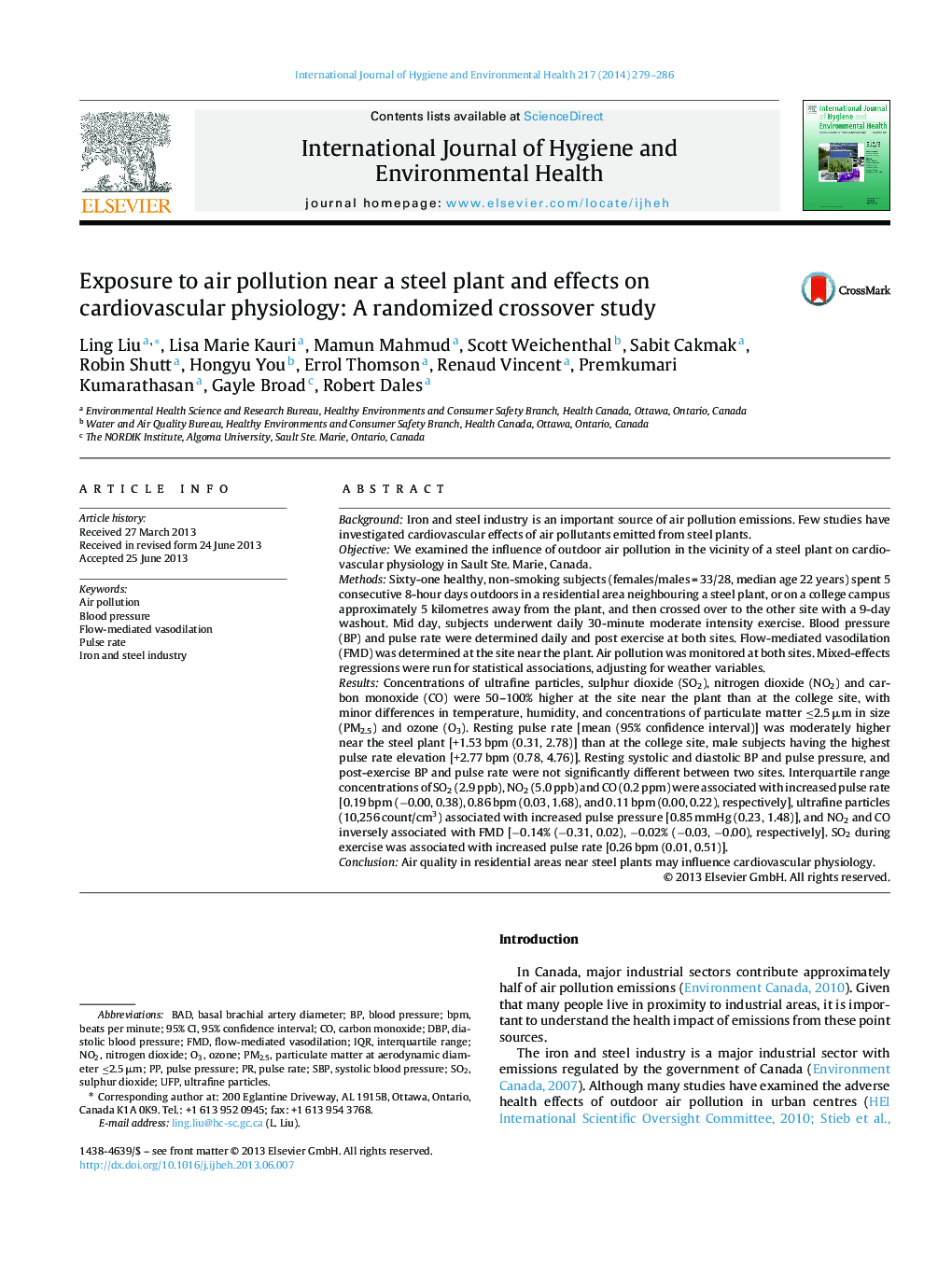| Article ID | Journal | Published Year | Pages | File Type |
|---|---|---|---|---|
| 2588641 | International Journal of Hygiene and Environmental Health | 2014 | 8 Pages |
BackgroundIron and steel industry is an important source of air pollution emissions. Few studies have investigated cardiovascular effects of air pollutants emitted from steel plants.ObjectiveWe examined the influence of outdoor air pollution in the vicinity of a steel plant on cardiovascular physiology in Sault Ste. Marie, Canada.MethodsSixty-one healthy, non-smoking subjects (females/males = 33/28, median age 22 years) spent 5 consecutive 8-hour days outdoors in a residential area neighbouring a steel plant, or on a college campus approximately 5 kilometres away from the plant, and then crossed over to the other site with a 9-day washout. Mid day, subjects underwent daily 30-minute moderate intensity exercise. Blood pressure (BP) and pulse rate were determined daily and post exercise at both sites. Flow-mediated vasodilation (FMD) was determined at the site near the plant. Air pollution was monitored at both sites. Mixed-effects regressions were run for statistical associations, adjusting for weather variables.ResultsConcentrations of ultrafine particles, sulphur dioxide (SO2), nitrogen dioxide (NO2) and carbon monoxide (CO) were 50–100% higher at the site near the plant than at the college site, with minor differences in temperature, humidity, and concentrations of particulate matter ≤2.5 μm in size (PM2.5) and ozone (O3). Resting pulse rate [mean (95% confidence interval)] was moderately higher near the steel plant [+1.53 bpm (0.31, 2.78)] than at the college site, male subjects having the highest pulse rate elevation [+2.77 bpm (0.78, 4.76)]. Resting systolic and diastolic BP and pulse pressure, and post-exercise BP and pulse rate were not significantly different between two sites. Interquartile range concentrations of SO2 (2.9 ppb), NO2 (5.0 ppb) and CO (0.2 ppm) were associated with increased pulse rate [0.19 bpm (−0.00, 0.38), 0.86 bpm (0.03, 1.68), and 0.11 bpm (0.00, 0.22), respectively], ultrafine particles (10,256 count/cm3) associated with increased pulse pressure [0.85 mmHg (0.23, 1.48)], and NO2 and CO inversely associated with FMD [−0.14% (−0.31, 0.02), −0.02% (−0.03, −0.00), respectively]. SO2 during exercise was associated with increased pulse rate [0.26 bpm (0.01, 0.51)].ConclusionAir quality in residential areas near steel plants may influence cardiovascular physiology.
